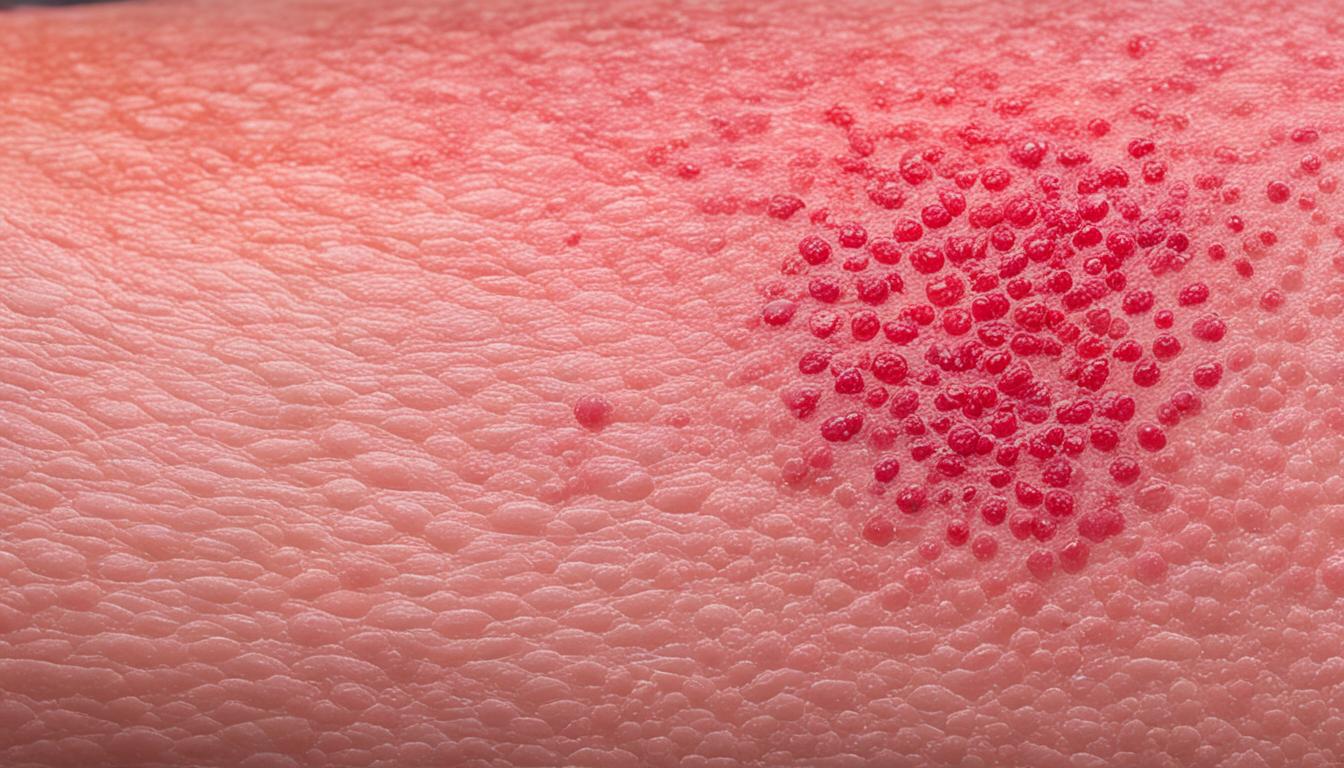Heat rash, or prickly heat, is a common skin issue. It mainly affects babies and young kids, but anyone can get it. This condition happens when sweat ducts get blocked.
Symptoms:
You might notice small, itchy bumps if you have heat rash. These bumps might feel like they’re pricking or stinging. They often show up in areas where skin rubs together or folds.
Causes:
Heat and moisture level are big culprits in heat rash. If the weather is hot and sticky, your sweat glands may get overwhelmed. This can block ducts, leading to these red bumps.
Diagnosis:
Diagnosing heat rash usually just needs a visual look and knowing your medical history. Sometimes, a doctor might take a closer look or test skin samples. They do this to make sure the rash is from heat and not something else.
Stem Cell Therapy:
In the exciting field of medicine, researchers are looking into using stem cells for skin issues like heat rash. Stem cells can help fix damaged skin and make it heal better. This treatment has a lot of potential, but it’s still being studied.
Key Takeaways:
- Heat rash, or prickly heat, shows up as red bumps or blisters.
- It’s often caused by being in hot, humid environments, affecting babies and young kids the most.
- The rash shows on areas where skin rubs or folds.
- Most heat rashes go away without needing special treatment.
- Stem cell therapy could be a new way to treat heat rash and other skin problems.
Symptoms and Causes of Heat Rash in Babies
Heat rash in babies is common and shows as small, red bumps on their skin. You’ll most often see them on the neck, buttocks, and skin folds. It happens when their skin gets too hot and wet. This could be because they wear too many clothes in hot weather or spend time in humid places.
Two main types of heat rash babies get are miliaria crystallina and miliaria rubra. Miliaria crystallina is on the skin’s surface and looks like water droplets or blisters. Miliaria rubra is deeper and appears as widespread red bumps.
To avoid baby heat rash, be careful with how you dress your baby when it’s warm. Choose clothes that let their skin breathe. Also, try to keep their environment cool and less humid. Using products that are kind to their delicate skin can also help.
It’s important to know that baby heat rash is not the same as other skin issues they might have. Baby acne, cradle cap, and baby eczema are a bit different. Baby acne turns up as red or white bumps on the face and is due to the mother’s hormones. Cradle cap makes the scalp scaly, and baby eczema causes dry, itchy patches on the skin.
Now that you know about baby heat rash, you can help prevent and manage it. Follow simple steps to keep your baby comfortable and their skin healthy.
Key Takeaways:
- Baby heat rash is characterized by small red bumps on the body, most commonly found on the neck, buttocks, and skin folds.
- Excessive heat and moisture buildup, as a result of overdressing or exposure to hot and humid environments, can cause baby heat rash.
- There are two types of baby heat rash: miliaria crystallina, which affects the surface of the skin, and miliaria rubra, which involves the deeper layers of the skin.
- To prevent and treat baby heat rash, parents should avoid overdressing, dress their babies in breathable fabrics, manage heat and humidity levels, and use gentle skincare products.
- Baby heat rash is different from other common infant skin conditions like baby acne, cradle cap, and baby eczema.
Diagnosis, Treatment, and Prevention of Heat Rash
Heat rash in babies is often diagnosed by a pediatrician through a quick look. They check it’s not something else. To treat it, focus on comfort and healing. Cool the skin down. Keep the area dry, which helps stop the itching.
Clothed babies in light, airy materials like cotton. This lets their skin breathe. Avoid using heavy creams. These can make the rash worse by keeping in the heat.
If the rash keeps getting worse, see a doctor right away. This is especially true if the baby also has a fever or isn’t eating well. A doctor can give you advice and, if necessary, prescribe treatments. But, most times, baby heat rashes will go away on their own.
Preventing heat rashes is key. Dress your baby in light, loose clothes made of natural materials. Also, keep the baby’s room well ventilated. This helps lower the risk of a heat rash. Being careful and following these tips can spare your baby from this itchy problem.

